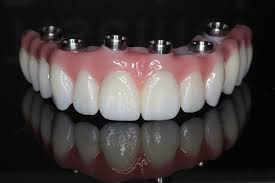Revolutionizing Blood Storage: Advanced Solutions for Ensuring the Purity and Viability of Stored Blood in Contemporary Blood Banks

Blood banks play a crucial role in healthcare by providing a stable and secure supply of blood for various medical procedures, including surgeries, trauma care, and treatments for various medical conditions. The preservation of blood integrity and safety is paramount, and advancements in technology have significantly impacted the design and materials used in modern blood containers. This article delves into the latest technologies and materials employed in contemporary blood containers, with a focus on maintaining the purity and viability of stored blood in blood banks.
Plastic Blood Bags: A Revolutionary Shift
Traditionally, glass containers were utilized for blood containers used in blood bank, but the advent of plastic blood bags marked a revolutionary shift in blood banking. The use of plastic not only improved flexibility and durability but also reduced the risk of breakage and contamination. Polyvinyl chloride (PVC) and polyolefin are commonly employed plastics due to their compatibility with blood components and ease of manufacturing. These materials are also flexible, allowing for efficient mixing during component separation processes.
Additive Solutions: Extending Blood Shelf Life
To enhance the preservation of blood components, modern blood containers often contain additive solutions. These solutions, such as citrate-phosphate-dextrose (CPD) and citrate-phosphate-double-dextrose (CP2D), serve multiple purposes, including preventing blood clotting, maintaining cell integrity, and extending the shelf life of stored blood. By introducing these solutions at the time of collection, blood banks can store whole blood and components for an extended duration without compromising the quality of the blood.
Leukoreduction Filters: Mitigating Transfusion Risks
Leukoreduction, the process of removing white blood cells from blood components, is a critical step in ensuring the safety of blood transfusions. Leukocytes can cause adverse reactions in recipients and contribute to the degradation of blood components during storage. Modern blood containers often incorporate leukoreduction filters, which effectively remove white blood cells and improve the overall quality and safety of stored blood. This innovation has become a standard practice in blood banking, significantly reducing the risk of transfusion-related complications.
Irradiation for Pathogen Inactivation
Pathogen inactivation is a key consideration in blood safety. Blood components can be treated with gamma irradiation to eliminate pathogens, particularly viruses and bacteria, without compromising the viability of the blood. This process is especially crucial for blood transfusions in immunocompromised patients. Modern blood containers used in blood bank are designed to facilitate the easy incorporation of irradiation processes, ensuring the safety of stored blood and minimizing the risk of transmitting infectious diseases through transfusions.
Medical Refrigerators and Freezers: Maintaining Optimal Storage Conditions
Medical refrigerators and freezers are indispensable components of modern blood banking infrastructure. These specialized storage units are designed to maintain precise temperature control, ensuring that blood and blood components are stored at optimal conditions to preserve their integrity. Medical refrigerators and freezers are equipped with temperature monitoring systems, alarms, and backup power sources to safeguard the stored blood in the event of power outages or equipment malfunctions.
a. Temperature Control in Medical Refrigerators:
Medical refrigerators are designed to maintain temperatures between 2°C and 6°C, preventing the growth of bacteria and ensuring the stability of blood components. Advanced refrigeration technologies, such as forced air cooling and intelligent temperature control systems, contribute to maintaining a consistent internal temperature.
b. Ultra-Low Temperature Freezers:
For long-term storage of certain blood components and specialized applications, ultra low temperature freezer are employed. These freezers maintain temperatures as low as -80°C or even lower, effectively preserving the viability of sensitive blood products, such as stem cells and certain plasma derivatives.
Barcoding and Tracking Systems: Enhancing Traceability
To enhance the traceability of blood units throughout the storage and distribution process, modern blood containers often incorporate barcoding and tracking systems. Barcodes are affixed to blood bags, allowing for accurate and efficient identification, reducing the risk of errors in blood transfusions. Tracking systems enable real-time monitoring of the location and status of blood units within the blood bank, improving inventory management and overall operational efficiency.
Smart Monitoring Systems: Ensuring Quality Assurance
Smart monitoring systems have emerged as an integral part of blood storage infrastructure. These systems use sensors and data analytics to monitor various parameters, including temperature, humidity, and pressure inside storage units. In the event of deviations from optimal conditions, these systems trigger alarms, allowing prompt corrective action to prevent the compromise of stored blood. The integration of smart monitoring systems contributes to the overall quality assurance and safety of blood banking operations.
Conclusion:
In conclusion, the field of blood banking has witnessed significant advancements in technologies and materials used in modern blood containers. The transition from glass to plastic, the incorporation of additive solutions, the implementation of leukoreduction filters, and the utilization of irradiation for pathogen inactivation collectively contribute to ensuring the purity and safety of stored blood. Additionally, the role of medical refrigerators and freezers, with precise temperature control and monitoring capabilities, cannot be overstated in preserving the viability of blood components. As innovations continue to unfold, the future of blood banking holds promise in further enhancing the efficiency, safety, and accessibility of stored blood for medical interventions worldwide.



